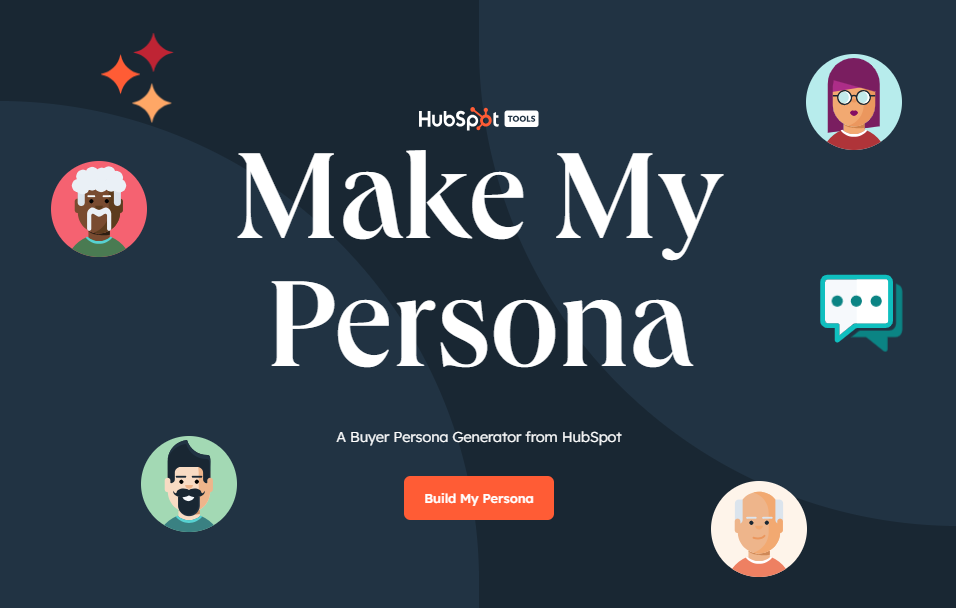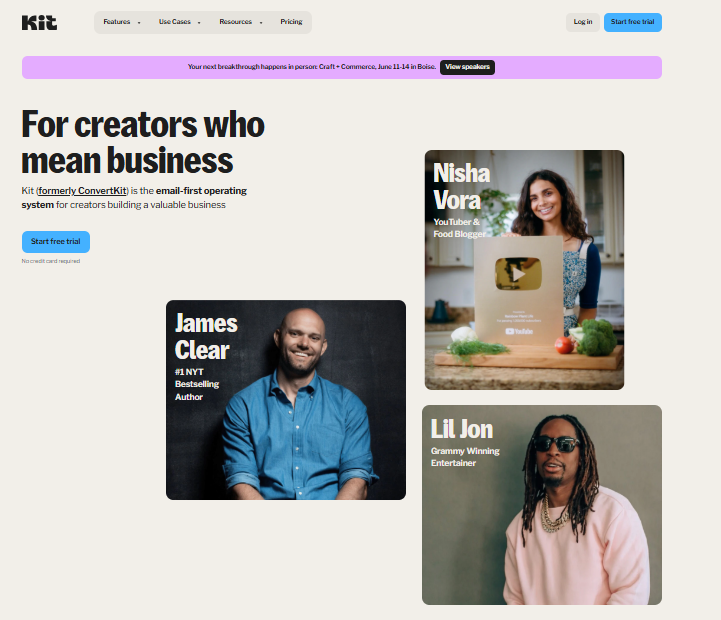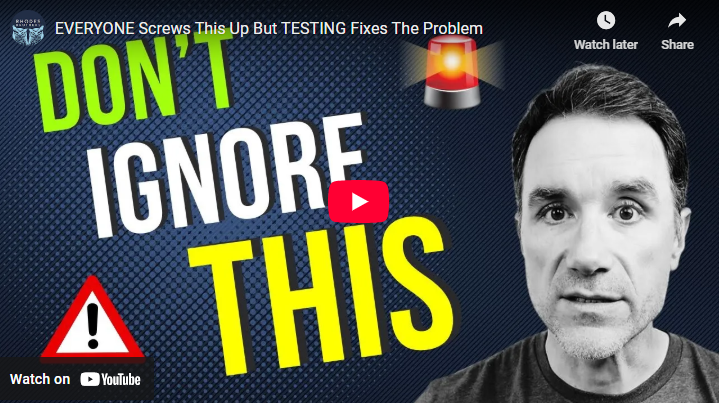For More Free Videos, Subscribe to the Rhodes Brothers YouTube Channel.
“You think you know what the market wants… but until you put it into the market and test it, you don’t.”
— John S. Rhodes, Rhodes Brothers
If you’re writing to everyone, you’re selling to no one.
Every marketer wants to crack the code to achieve consistent sales. But here’s the cold, hard truth: most people get it wrong—not because they’re lazy or untalented, but because they focus on the wrong audience. They think they’re marketing to “the market,” when in reality, they need to be marketing to one person.
Sound like a subtle difference? It’s not. It’s a game-changer.
In today’s post, we’re diving deep into one-to-one marketing—a strategic, psychology-based approach that transforms your marketing from generic noise into a laser-focused message that converts. We’ll break down what it means, how to execute it, and most importantly, how to test and profit from it.
This isn’t a theory. It’s what the Rhodes Brothers use to grow their business—and it’s what you can use to grow yours.
So, buckle up. You’re about to learn how to speak directly to your ideal customer—and make them feel like you’re reading their mind.
TL;DR
- One-to-one marketing is more powerful than mass messaging
- Focus on psychology, not sociology—talk to individuals, not groups
- Surveys and data are only guesses until tested
- Use testing and iteration to find what truly works
- Your sales copy should be a conversation, not a broadcast
- Buying decisions are emotional and personal—speak to that
- Scarcity and urgency still work—but only when tailored to the person
- You don’t know what works until people start buying
Why One-to-One Marketing Works (Even in a One-to-Many World)
Most marketers treat “the market” like a single giant blob. They send out surveys, run analytics, and assume that the data represents everyone equally. It doesn’t.
“The market is actually many, many, many individuals.” — John S. Rhodes
In reality, every sale happens between one person and one brand. Even if you have 100,000 subscribers, each person experiences your message alone, on their own terms, in their own emotional state.
When you write copy, film a video, or launch a product, you must do it with one person in mind.
Step-by-Step: How to Master One-to-One Marketing
If you’re tired of creating content that gets ignored or building offers that flop, it might not be your product—it might be your approach. The secret? Stop trying to talk to “everyone” and start talking to one person at a time. That’s the heartbeat of one-to-one marketing.
This strategy isn’t new, but it’s often overlooked. When done right, it transforms your messaging from “just another ad” into something that feels like a personal conversation—one that builds trust and drives action.
Let’s break it down step by step.
Step 1: Get Clear on Your One Person
Before you write a word of copy or design a product, create a profile of your ideal customer:
- What are they struggling with right now?
- What keeps them up at night?
- Where are they when they see your content? (On their phone in bed? At work?)
- What’s the first emotion they feel when they hear your offer?

Tool Tip: Use MakeMyPersona by HubSpot to create a detailed avatar.
Step 2: Write Like You’re Talking to Them
Ditch the “Dear Valued Customers” tone. Instead:
- Use second person (“you”) throughout
- Tell stories that reflect their experience
- Ask rhetorical questions they’re already asking themselves
Step 3: Test Everything (Because You Don’t Know Until You Know)
Just because someone told you what they want in a survey doesn’t mean they’ll buy it. You need to test in the real market.
- Launch small MVPs (Minimum Viable Products)
- Test different messages via email, ads, or social posts
- Watch what gets clicks, what gets ignored, and what gets buys

Tool Tip: Use tools like ConvertKit or Unbounce to split test landing pages and emails easily.
Step 4: Use Scarcity the Right Way
One of the most powerful psychological triggers is FOMO—Fear of Missing Out.
You can create urgency by:
- Limiting availability (only 100 units)
- Creating time-based bonuses (expires in 48 hours)
- Closing cart deadlines
Example: “Only 7 spots left for our live coaching program, and doors close Friday at midnight.”
Step 5: Follow the Slow Burn (Don’t Panic)
Not every offer will explode on Day 1. Sometimes, it takes time for people to warm up, think, and act.
- Stay consistent with follow-up emails
- Use retargeting ads to remind them
- Create content that reinforces the value over time
Actionable Steps for One-to-One Marketing
Whether you’re just getting started, building a personal brand, or refining a long-standing business, the principles of one-to-one marketing can be tailored to meet you where you are. Here’s how to apply this powerful strategy in a way that resonates with your current stage of life or business.
🟢 If You’re a Beginner: Just Starting Out
When you’re new to marketing, the idea of speaking to “just one person” might feel counterintuitive—shouldn’t you try to reach as many people as possible? Actually, no. The best thing you can do as a beginner is to narrow your focus so your message is crystal clear. Start by creating a simple customer persona. Give them a name, a job, and a real pain point they’re struggling with. Don’t overcomplicate it—just imagine helping one friend with one problem.
Next, write your content or sales message as if you’re writing a letter to them. Keep your tone conversational and don’t worry about sounding “professional.” People crave human connection, not polished perfection. Test your message by offering something small—a free guide, a short video, or a mini product—and watch how people respond. Use free tools like Google Forms to ask simple follow-up questions like, “What did you find helpful?” or “What else would you like help with?” This feedback loop helps you improve without feeling overwhelmed.
🔵 If You’re a Millennial Entrepreneur or Creator: Ready to Build and Scale
As a millennial, you likely already know the value of authenticity and personal branding. One-to-one marketing fits perfectly with your vibe. You don’t need to pretend you’re a corporate brand—lean into your personality. Use storytelling, humor, and real-world experiences in your content. When you send emails or post on social, imagine you’re DMing a friend who needs exactly what you’re offering.
Start segmenting your audience based on interests, behaviors, or how they found you. Tools like ConvertKit, Drip, or MailerLite make this easy. For example, if one group downloaded your “Instagram Growth Guide” and another registered for your “Freelance Pricing Webinar,” you can now message them differently based on their interests. This is one-to-one marketing at scale.
Also, test small offers like digital templates, exclusive memberships, or short coaching programs. Price them affordably ($17–$97) and use urgency like “only open for 5 days” or “limited to 20 spots” to prompt action. If you’re active on Instagram or TikTok, use stories, polls, or Q&As to learn more about your audience and reflect their language back to them in your sales copy.
🟣 If You’re Nearing Retirement or Running an Established Business
If you’re more experienced, you’ve likely seen marketing trends come and go. One-to-one marketing might seem like a step back from automation and scale—but in reality, it’s what people crave now more than ever. Instead of blasting the same message to your entire list, tailor your communication to segments based on customer lifetime value, purchase history, or engagement.
Start by auditing your current messaging. Is it speaking to a crowd, or does it feel personal? You can fix this by adding personalized video messages through tools like Bonjoro or Loom. This is especially effective for high-ticket products or services, where trust and relationship are key.
Rather than launching big, expensive campaigns, test new ideas through soft launches, exclusive invites, or VIP beta groups. If you have a loyal customer base, consider sending personal emails asking for feedback or inviting them to a Zoom Q&A. This builds deep loyalty and often leads to referrals.
When crafting urgency, use real-world constraints—like limited coaching slots or expiration dates for bonuses. People in this demographic appreciate clarity and value, so be transparent about what they’ll get and why it matters now.
🧠 Across All Demographics: The Core Principles Stay the Same
No matter where you are in life or business, the core of one-to-one marketing stays the same:
- Focus on the psychology of one person
- Use language that feels personal and human
- Test small before going big
- Adjust based on behavior, not just feedback
- Keep your message consistent across platforms
As John S. Rhodes said in the video, “You think you know what the market wants… but until you put it into the market and test it, you don’t.” Testing is the great equalizer—whether you’re 22 and launching your first product, or 62 and optimizing your business for passive income.
Common Mistakes to Avoid
Even when your intentions are solid and your message is genuine, it’s easy to fall into traps that dilute your marketing and leave you wondering why things aren’t converting. One-to-one marketing is powerful, but only when done with clarity and strategy. Let’s look at some of the most common mistakes people make—and how you can avoid them.
❌ Trying to Please Everyone
The fastest way to fail is to try to make your message “safe” for everyone. It ends up resonating with no one.
Fix: Speak boldly to your one person. The right people will connect, the wrong people will bounce.
❌ Assuming Survey Data is Truth
Surveys are useful, but only as a starting point. What people say and what they buy are often different.
Fix: Use data to inspire ideas, but always test with real offers.
❌ Using Mass Messaging Language
Avoid generic phrases like:
- “For all your business needs”
- “Our valued customers”
- “We’re here for everyone”
Fix: Be specific, emotional, and personal.
Frequently Asked Questions
What is One-to-One Marketing?
It’s a marketing approach where you treat each customer as an individual instead of a member of a group. You focus on personal experiences and messages that resonate with one person.
Is this scalable if I have a big audience?
Yes! You’re not literally writing to each person—you’re creating personalized-feeling messages that scale using tools like email segmentation and dynamic content.
What tools help with personalization?
- ConvertKit
- ActiveCampaign
- Drip
- Segment
How do I know if my message is hitting?
Track engagement metrics like open rates, click-through rates, and conversions. Then, test variations.
Can this work for product-based businesses too?
Absolutely. Whether you sell physical or digital products, people buy based on emotion and personal relevance.
How do I create urgency without being sleazy?
Use real deadlines, limited quantities, or exclusive bonuses to encourage action.
Is this just for email marketing?
Nope. One-to-one thinking applies across everything—video, sales pages, ads, and even your branding.
What if I don’t know my customer well yet?
Start by talking to a few real customers. Ask open-ended questions. Then create a hypothesis and test.
How long should I test before adjusting?
Give each campaign enough data—at least 500 visitors or 100 email opens. Then decide based on results.
Can I automate one-to-one communication?
Yes! Use tools like RightMessage or ConvertFlow to tailor messages dynamically based on user behavior.
You Don’t Know Until You Know
If there’s one golden truth in marketing, it’s this: “You don’t know what works until money changes hands.”
You can guess. You can research. You can ask. But it’s not real until it’s tested in the wild.
So stop trying to “nail the market”—and start speaking to one person. Build your message like you’re sitting across the table from them. Then test, tweak, and rebuild until it clicks.
Start today. Pick one idea from this post and test it. The only real mistake is waiting too long to act.
Thanks for reading—and if you found this helpful, we’d love for you to subscribe to the Rhodes Brothers YouTube Channel for more real-world strategies that help you grow, sell, and thrive.
Resource List
📚 Books
- Influence: The Psychology of Persuasion by Robert Cialdini
- Made to Stick by Chip Heath & Dan Heath
- Building A StoryBrand by Donald Miller
- This Is Marketing by Seth Godin
🎧 Podcasts
🛠 Tools
- Email Marketing: ConvertKit, ActiveCampaign, MailerLite
- Landing Pages: Unbounce, Leadpages, ClickFunnels
- Surveys & Feedback: Typeform, Google Forms, Hotjar
- Behavior Tracking: RightMessage, Segment, Crazy Egg
- A/B Testing: VWO, Optimizely
🎓 Courses




